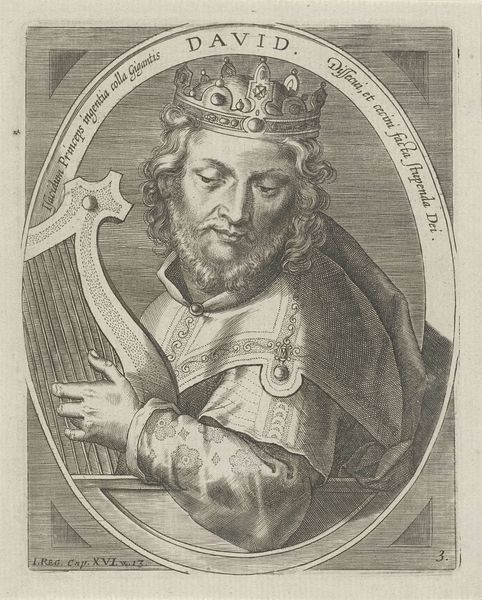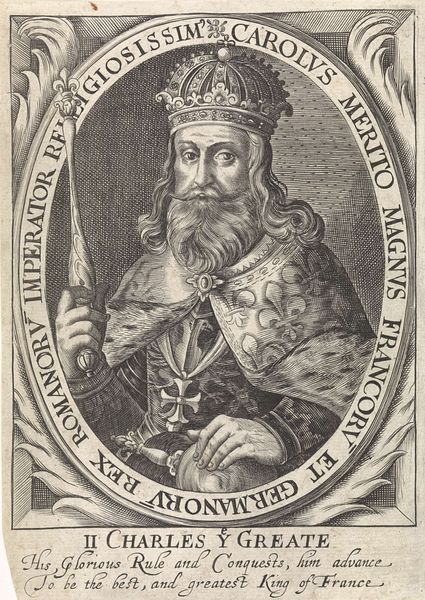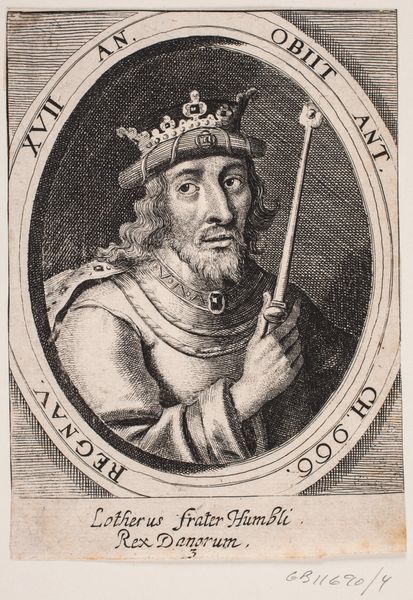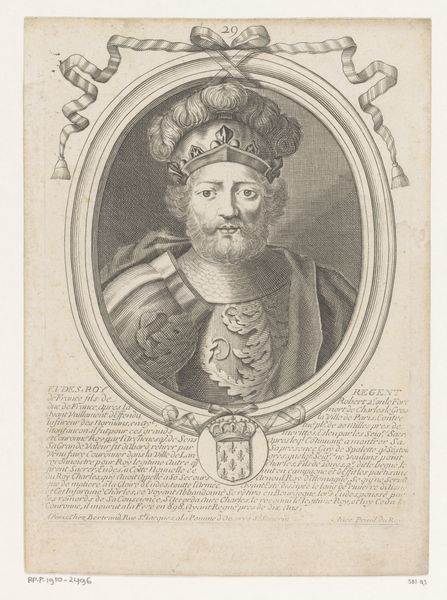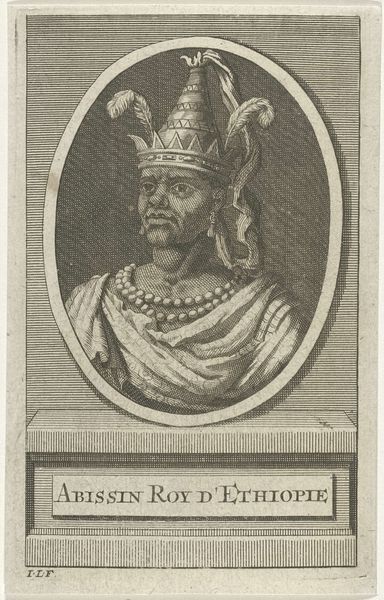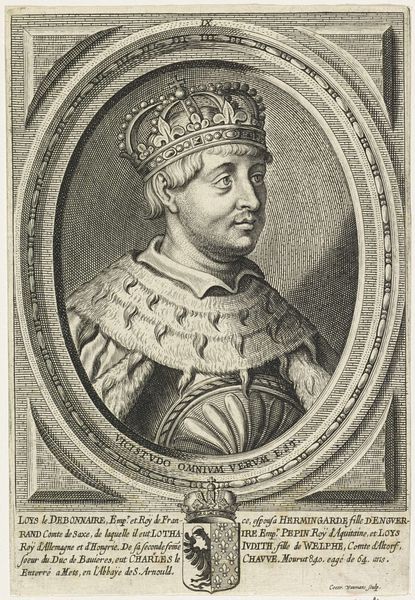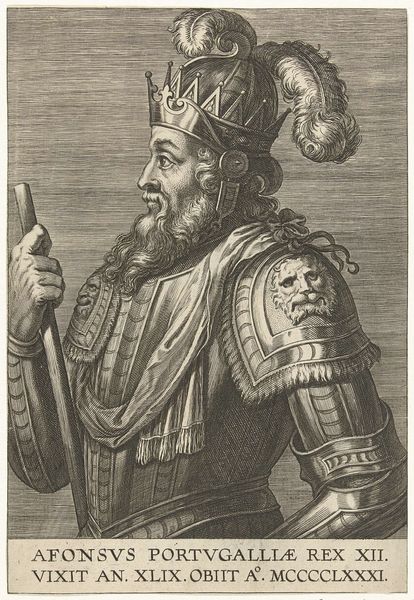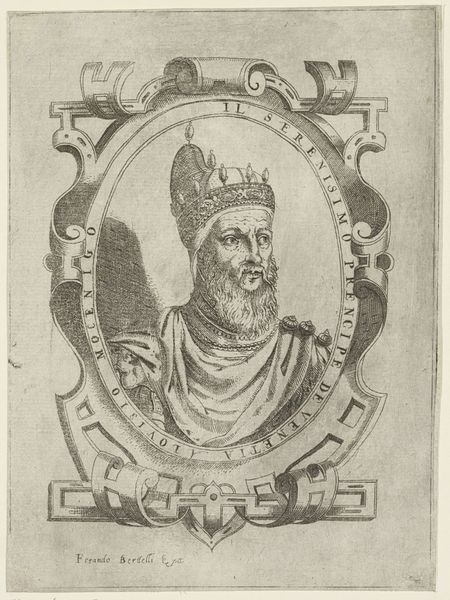
print, engraving
#
portrait
#
medieval
# print
#
history-painting
#
engraving
Dimensions: height 176 mm, width 120 mm
Copyright: Rijks Museum: Open Domain
Curator: Let's have a closer look at "Portret van Hendrik I, hertog van Brabant," an engraving made after 1661 by Pieter de Jode the Younger, currently held in the Rijksmuseum collection. Editor: My immediate impression is that it's imbued with a sense of regal authority. The ornate details, especially in his crown and attire, suggest power. Yet, his gaze holds a surprising gentleness, doesn't it? Curator: It does. This portrait is not simply a likeness, but an assertion of legitimacy, deeply entwined with the politics of the era. It aims to anchor Hendrik I within a historical and genealogical narrative. Note the Latin motto and heraldic shield below the portrait. These elements are more than decorative; they communicate Brabant's dynastic claims and virtues to a broad audience. Editor: Exactly. That heraldic shield, for instance, practically screams inherited power. The lion rampant, crowned and armed, embodies strength, courage and dominion. And those fleur-de-lis on the crown evoke associations with French royalty. It’s a careful curation of symbols aimed at conveying a specific message. Curator: These prints played a crucial role in disseminating images and shaping public perception of rulers. They weren't just portraits; they were tools for political propaganda. Think of how this image may have functioned in pamphlets or as part of a larger series depicting the lineage of rulers. Editor: Yes, the continuous reuse of symbols creates cultural memory. The crown, the specific posture, the frame itself, all add to this effect. They remind viewers not only of the individual, but of the concept of “kingship” as a whole. This repetition helps to establish and solidify certain ideals, in this case the authority of Hendrik I, as self-evident truths over time. Curator: Precisely. Viewing the artwork today allows us to grasp how the printed image mediated political power in the Early Modern Period. It allows us to investigate questions concerning the construction of national identity, aristocratic self-fashioning, and the media ecology that formed in the centuries before mass media. Editor: Looking at it this way transforms it. It goes beyond a simple picture; it transforms into a microcosm of cultural aspirations and power dynamics. Curator: Indeed, these historical symbols embedded in his portrayal allow us a lens to a rich landscape of culture and political ideology of that era.
Comments
No comments
Be the first to comment and join the conversation on the ultimate creative platform.
